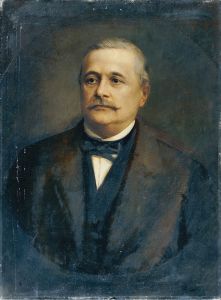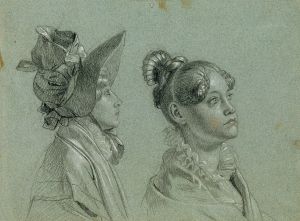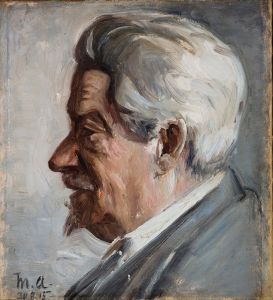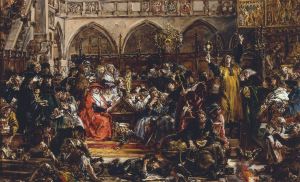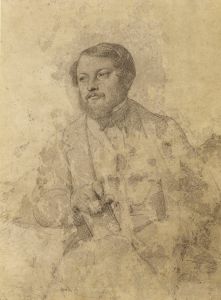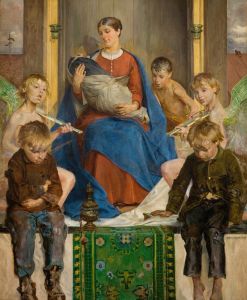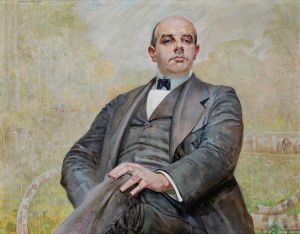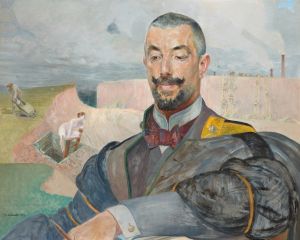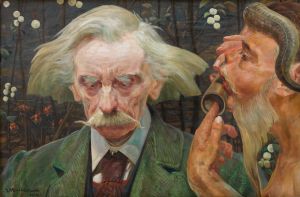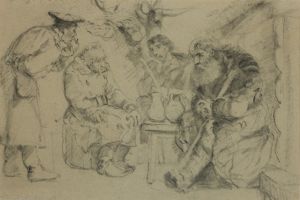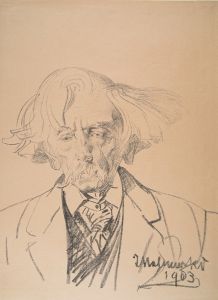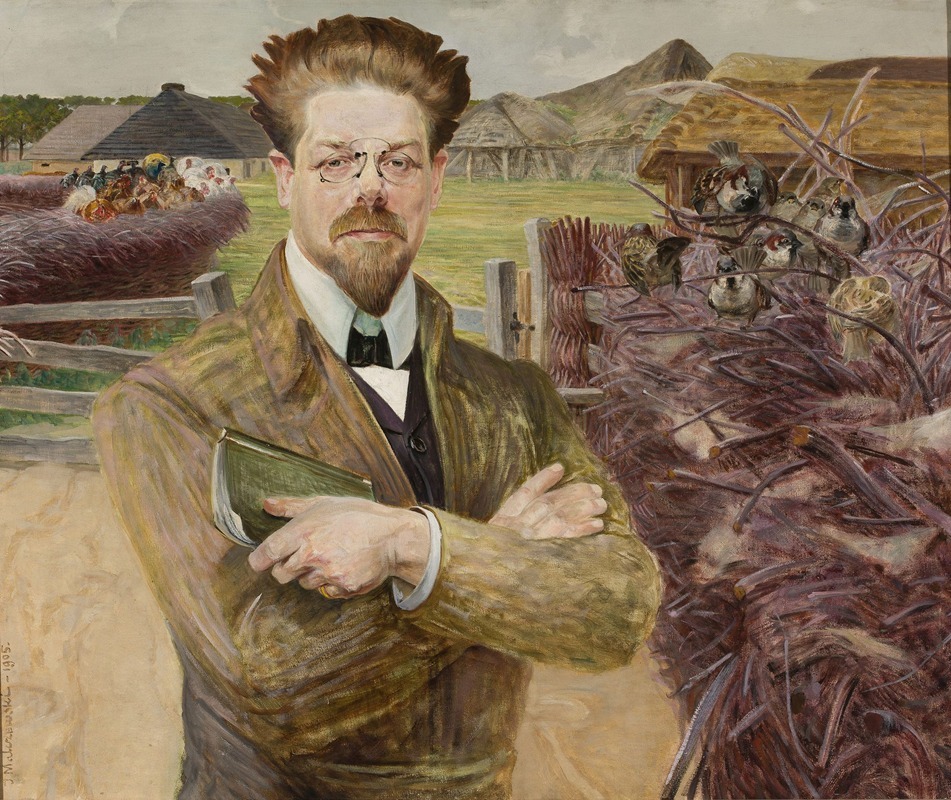
Portrait of Władysław Reymont
A hand-painted replica of Jacek Malczewski’s masterpiece Portrait of Władysław Reymont, meticulously crafted by professional artists to capture the true essence of the original. Each piece is created with museum-quality canvas and rare mineral pigments, carefully painted by experienced artists with delicate brushstrokes and rich, layered colors to perfectly recreate the texture of the original artwork. Unlike machine-printed reproductions, this hand-painted version brings the painting to life, infused with the artist’s emotions and skill in every stroke. Whether for personal collection or home decoration, it instantly elevates the artistic atmosphere of any space.
The "Portrait of Władysław Reymont" is a notable painting by the distinguished Polish artist Jacek Malczewski. This artwork is a significant representation of the Polish cultural and artistic milieu of the early 20th century, capturing the likeness of Władysław Reymont, a prominent Polish novelist and Nobel Prize laureate.
Jacek Malczewski, born in 1854, was a central figure in the Symbolist movement in Poland. He is renowned for his unique style that often incorporated elements of Polish folklore, mythology, and national identity. Malczewski's works are characterized by their vivid colors, intricate symbolism, and a deep sense of narrative, often reflecting the socio-political context of Poland during his lifetime.
Władysław Reymont, the subject of this portrait, was an influential literary figure in Poland. Born in 1867, Reymont is best known for his epic novel "The Peasants" ("Chłopi"), which earned him the Nobel Prize in Literature in 1924. His works often explore themes of rural life, Polish identity, and the socio-economic transformations of his time. Reymont's contribution to literature made him a celebrated figure in Poland, and his legacy continues to be influential.
The portrait by Malczewski is a testament to the mutual respect and recognition between two towering figures of Polish culture. While the exact date of the painting is not specified, it is likely to have been created during the period when both Malczewski and Reymont were at the height of their careers. The painting captures Reymont with a thoughtful expression, embodying the introspective and profound nature of his literary work.
Malczewski's portrayal of Reymont is not merely a literal representation but also an exploration of the writer's inner world. The use of color, light, and composition in the painting reflects Malczewski's Symbolist approach, where the visual elements serve to convey deeper meanings and emotions. The background and setting of the portrait, though not detailed in available descriptions, likely complement the thematic focus on Reymont's intellectual and cultural significance.
This portrait is part of Malczewski's broader oeuvre, which often included portraits of notable contemporaries, allegorical scenes, and mythological themes. His ability to blend realism with symbolism made his portraits particularly compelling, offering viewers insight into the personalities and spirits of his subjects.
The "Portrait of Władysław Reymont" holds a special place in Polish art history, not only for its artistic merit but also for its representation of a pivotal era in Poland's cultural development. It stands as a tribute to the enduring legacy of both Malczewski as an artist and Reymont as a writer, encapsulating the spirit of Polish nationalism and creativity during a time of significant change.
Today, the painting is appreciated for its historical and cultural significance, as well as its artistic excellence. It continues to be studied and admired by art historians, scholars, and enthusiasts who seek to understand the rich tapestry of Polish art and literature.





